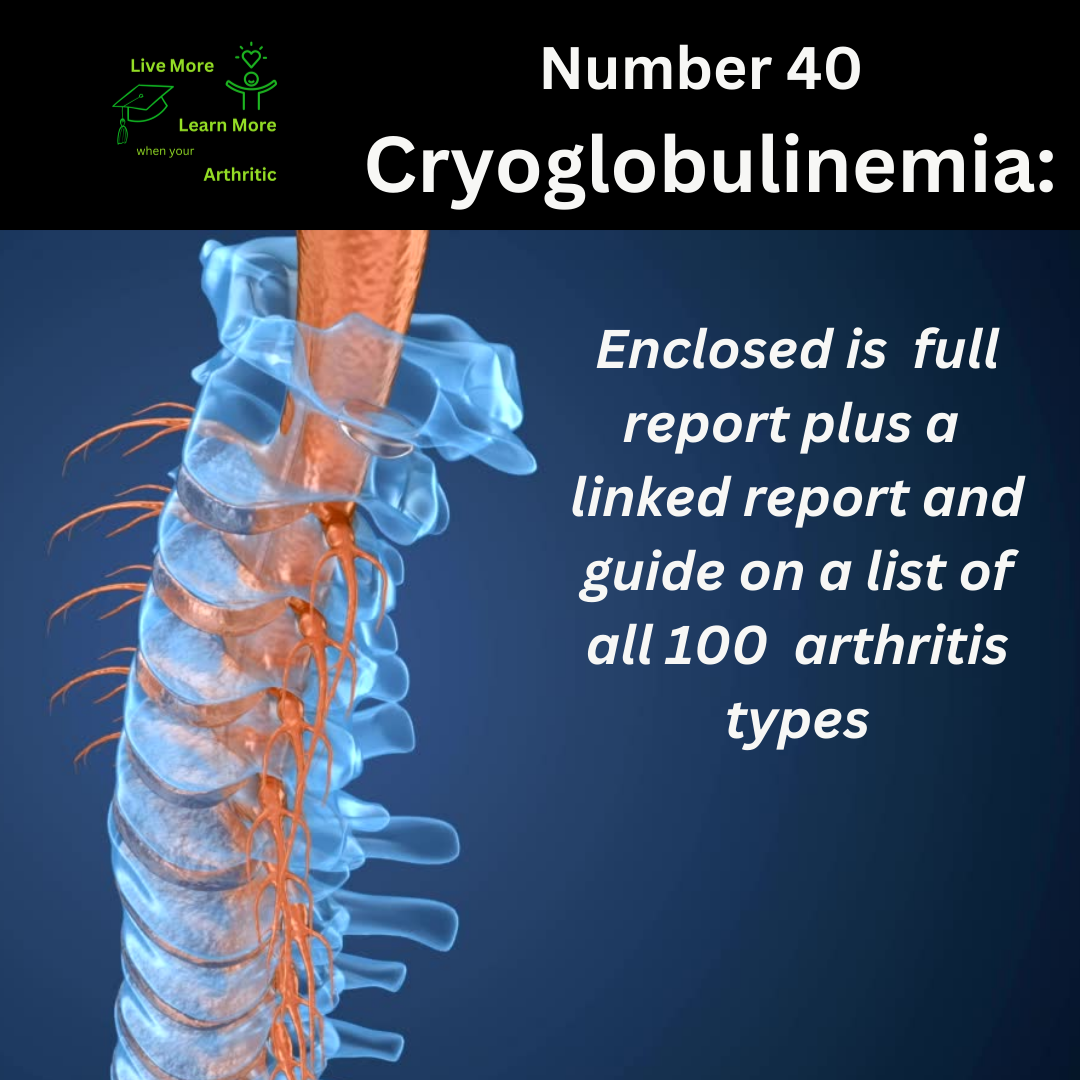
CREST Syndrome: Number 40 on the list of 100 types of Arthritis
Understanding CREST Syndrome: A Personal Journey to Wellness
In the realm of autoimmune diseases, CREST syndrome stands out as a unique and challenging condition, yet one that can be managed with proactive care and a positive outlook. Join me on a journey through the intricacies of CREST syndrome, exploring its impact, management strategies, and the possibilities for enhancing quality of life.
Description: CREST syndrome, also known as limited scleroderma, is a subtype of systemic sclerosis, a rare autoimmune disorder characterized by thickening and hardening of the skin and connective tissues. The name “CREST” is an acronym for its five primary features: Calcinosis, Raynaud’s phenomenon, Esophageal dysfunction, Sclerodactyly, and Telangiectasia.
Causes: The exact cause of CREST syndrome remains unknown, but it’s believed to involve immune system dysfunction triggering abnormal collagen production, leading to tissue fibrosis and vascular abnormalities.
Triggers: While specific triggers are unclear, genetic predisposition and environmental factors may play roles in initiating or exacerbating symptoms.
Symptoms: CREST syndrome manifests differently in each individual, but common symptoms include:
- Calcinosis: Formation of calcium deposits in the skin and soft tissues.
- Raynaud’s phenomenon: Blood vessel spasms in response to cold or stress, leading to color changes in fingers or toes.
- Esophageal dysfunction: Difficulty swallowing due to reduced esophageal motility.
- Sclerodactyly: Thickening and tightening of the skin on the fingers and toes.
- Telangiectasia: Small red spots caused by dilated blood vessels on the skin surface.
Journey Towards Remission
Achieving remission in CREST syndrome involves holistic management focusing on symptom control and preventing disease progression.
Remission Possibilities:
- Symptomatic Relief: Medications for symptom management, such as calcium channel blockers for Raynaud’s phenomenon or proton pump inhibitors for esophageal reflux.
- Lifestyle Modifications: Avoiding triggers like cold temperatures, stress, or certain foods that exacerbate symptoms.
- Physical Therapy: Exercises to maintain joint mobility and prevent contractures.
- Psychological Support: Coping strategies and emotional wellness techniques to manage stress and anxiety.
Impact on Quality of Life
The impact of CREST syndrome can vary widely, but proactive management can significantly enhance quality of life. By adopting a proactive approach, individuals can:
- Improve Joint Mobility: Regular stretching and range-of-motion exercises can preserve joint function.
- Manage Symptoms: Early intervention and lifestyle adjustments can minimize symptom severity.
- Promote Emotional Well-being: Support groups and counseling can alleviate stress and depression associated with chronic illness.
Looking Beyond the Symptoms
While CREST syndrome primarily affects skin and connective tissues, it can lead to several complications and interrelated conditions:
Possible Complications:
- Interstitial Lung Disease: Fibrosis of lung tissue, impacting breathing.
- Heart Involvement: Pericarditis or myocardial fibrosis, affecting heart function.
- Renal Involvement: Kidney damage due to vascular changes.
- Gastrointestinal Issues: Dysmotility, malabsorption, or bacterial overgrowth in the intestines.
While there’s no cure for CREST syndrome, some holistic approaches may complement traditional treatments:
Holistic Breakthroughs:
- Mindfulness Practices: Meditation and yoga for stress reduction.
- Anti-Inflammatory Diet: Emphasizing whole foods, omega-3 fatty acids, and antioxidants.
- Herbal Remedies: Chamomile tea for relaxation or turmeric for its anti-inflammatory properties.
Understanding Demographics
CREST syndrome predominantly affects women, often diagnosed between the ages of 30 and 50, although it can occur at any age. The disease course varies widely, and while life expectancy can be impacted by complications like lung or heart involvement, proactive management can extend and enhance quality of life.
Conclusion: A Personal Triumph
In navigating CREST syndrome, proactive management, emotional resilience, and a holistic approach can empower individuals to lead fulfilling lives despite the challenges. By understanding the disease, embracing self-care practices, and seeking support from healthcare professionals and peers, individuals with CREST syndrome can thrive, embodying the spirit of resilience and hope.
This narrative delves into the depths of CREST syndrome, offering insights, management strategies, and the promise of a brighter tomorrow for those affected by this complex autoimmune condition.

